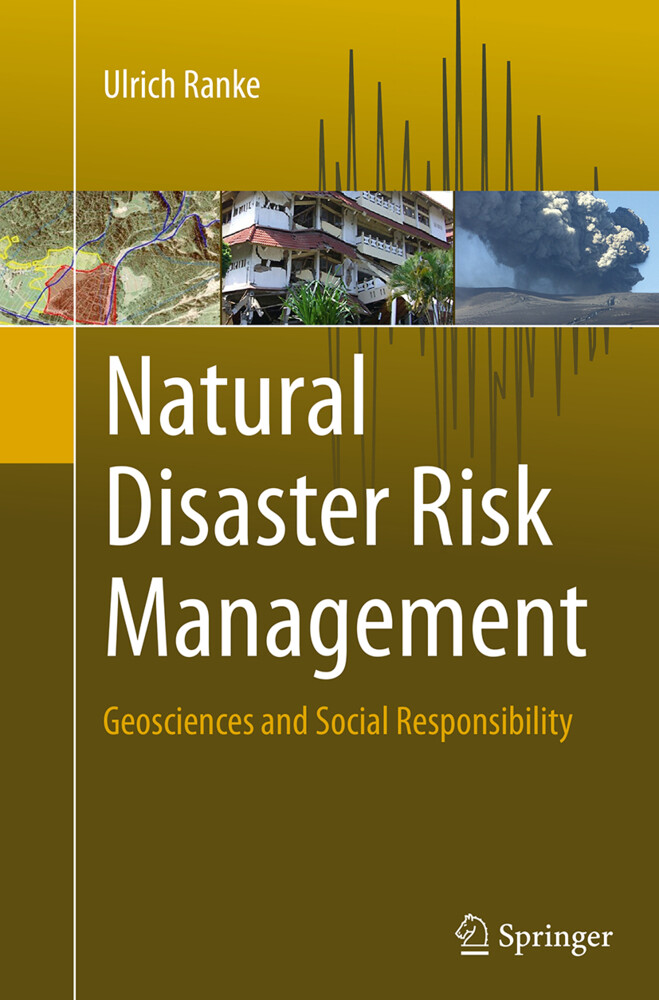
Zustellung: Mo, 20.01. - Mi, 22.01.
Versand in 2 Tagen
VersandkostenfreiBestellen & in Filiale abholen:
This textbook provides a thorough introduction to natural disaster risk management. Many aspects of disaster risk management, such as those involved in earthquakes, volcanic eruptions, floods, avalanches and mudslides call for similar prevention and preparedness instruments, management concepts, and countermeasures. This textbook assumes the viewpoint of a regional disaster risk manager who is responsible for a certain area, and for making the lives of the people who live there safer, regardless of the type of natural disaster that may occur. The same holds true for boosting preparedness and awareness in the population at risk. The book includes numerous examples of hazard mitigation concepts and techniques, as well as ways of intensively involving the local population in prevention schemes at an early stage. Furthermore, it provides an in-depth examination of the function of risk communication, both as an instrument for disseminating official information and as a function of publicmedia. In closing, a chapter on risk splitting offers insights into insurance-based models for risk financing. This comprehensive book is a must-read for all students, researchers and practitioners dealing with natural disaster risk management.
Inhaltsverzeichnis
Introduction. - Responsibility of Geoscience in Natural Disaster Risk Management. - General Aspects. - Natural Disaster vs. Extreme Events. - Society of Risk. - Definitions of Hazard, Vulnerability and Risk. - General Aspects. - Definitions. - Hazard Assessment. - Disaster Statistics. - One Hazard Distribution. - Hazard Cascade. - Multiple Hazard Distribution. - Multiple Hazard Assessment Application. - Vulnerability Assessments. - General Aspects. - Definition Vulnerability. - Social and Cultural Vulnerability. - Economic Vulnerability. - Ecological Vulnerability. - Risk Assessments General Aspects. - Definition. - Loss Damage Curve, Frequency vs. Probability. - Social Amplification of Risk. - Societal Resilience. - Risk Assessment. - Risk Communications. - General Aspects Risk Perception. - Role of Media. - Communication by Officials. - Communication within Emergency Management Organizations. - Risk Management. - Mitigation. - Increasing Resilience.
Produktdetails
Erscheinungsdatum
01. November 2016
Sprache
englisch
Auflage
Softcover reprint of the original 1st ed. 2015
Seitenanzahl
536
Autor/Autorin
Ulrich Ranke
Verlag/Hersteller
Produktart
kartoniert
Abbildungen
XX, 514 p. 132 illus., 117 illus. in color.
Gewicht
803 g
Größe (L/B/H)
235/155/29 mm
Sonstiges
Paperback
ISBN
9783319351865
Entdecken Sie mehr
Pressestimmen
Ranke has written a very timely, well-organized, comprehensive textbook that will be remarkably valuable to earth scientists in many disciplines throughout the world. Climatologists, hydrologists, geophysicists, volcanologists, and sedimentologists are just some specialists who will find this book an important resource. This guide and accompanying free software will be very useful to students studying natural disaster risks. Summing Up: Highly recommended. Upper-division undergraduates and above. (M. S. Field, Choice, Vol. 53 (9), May, 2016)
Bewertungen
0 Bewertungen
Es wurden noch keine Bewertungen abgegeben. Schreiben Sie die erste Bewertung zu "Natural Disaster Risk Management" und helfen Sie damit anderen bei der Kaufentscheidung.










